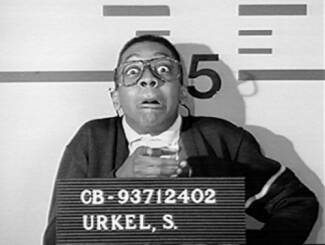In the beginning, there were lots of good jazz. The truth is, however, most of the jazzes were bad ones, and a man had to do some hard searching to find the good jazzes. One man, named Mister Jazz, had a very hard time finding such jazzes.
(The following is a dramatization.)
He went to work one day….
Mister Jazz: *sigh* Just not enough good jazzes out there.
Associate: What’s wrong Mister Jazz?
Mister Jazz: Well, you see, I’m looking for some good jazzes.
And so went his silly little life. His mother-in-law would call him on the phone asking about the jazz. “How about the jazz?” she would ask him. “After all, your frigging name is Mister Jazz, and you haven’t found and good jazzes yet! What the crap is that?”
One day, in the suburbs, Mister Jazz met Kenny G.
Still, he had not found any good jazzes. His main problem was a large goiter that scared many children and women. As most people know, jazz players are always hanging around with little children and women, and so when they would get scared away, the jazz players would follow them.
So, another day, Mister Jazz got his goiter removed. Unfortunately, the surgery went wrong, and he died the next day.
Some time after that, a man named Perez found some good jazz, but he kept it to himself. This started the period commonly known as the “Jazz Hoarding” days. This period, from 1918 to sometime afterward, was a dark period for jazz. Unless, of course, you were a jazz hoarder.
A jazz hoarder (Fig. 1.1)
A jazz hoarder was the kind of person you would see in all sorts of places, especially thrift stores. They always used to hang out in bunches, with lots of hoochie mamas on their hips. They could ride a bicycle very well, and they never forgot how. Jazz hoarders, or “j-fools” as President Lyndon B. Johnson referred to them, died out after a lethal addition to sniffing athlete’s foot power swept through their ranks.
The next period in the history of jazz is the “Saxophone Monk” period. As the titles implies, the era was marked with many famous saxophone-playing monks. A follow up period, “Clarinet Priests,” and the ill-thought-out “Drum Set Druids” ruined the credibility of jazz among the clergy.

